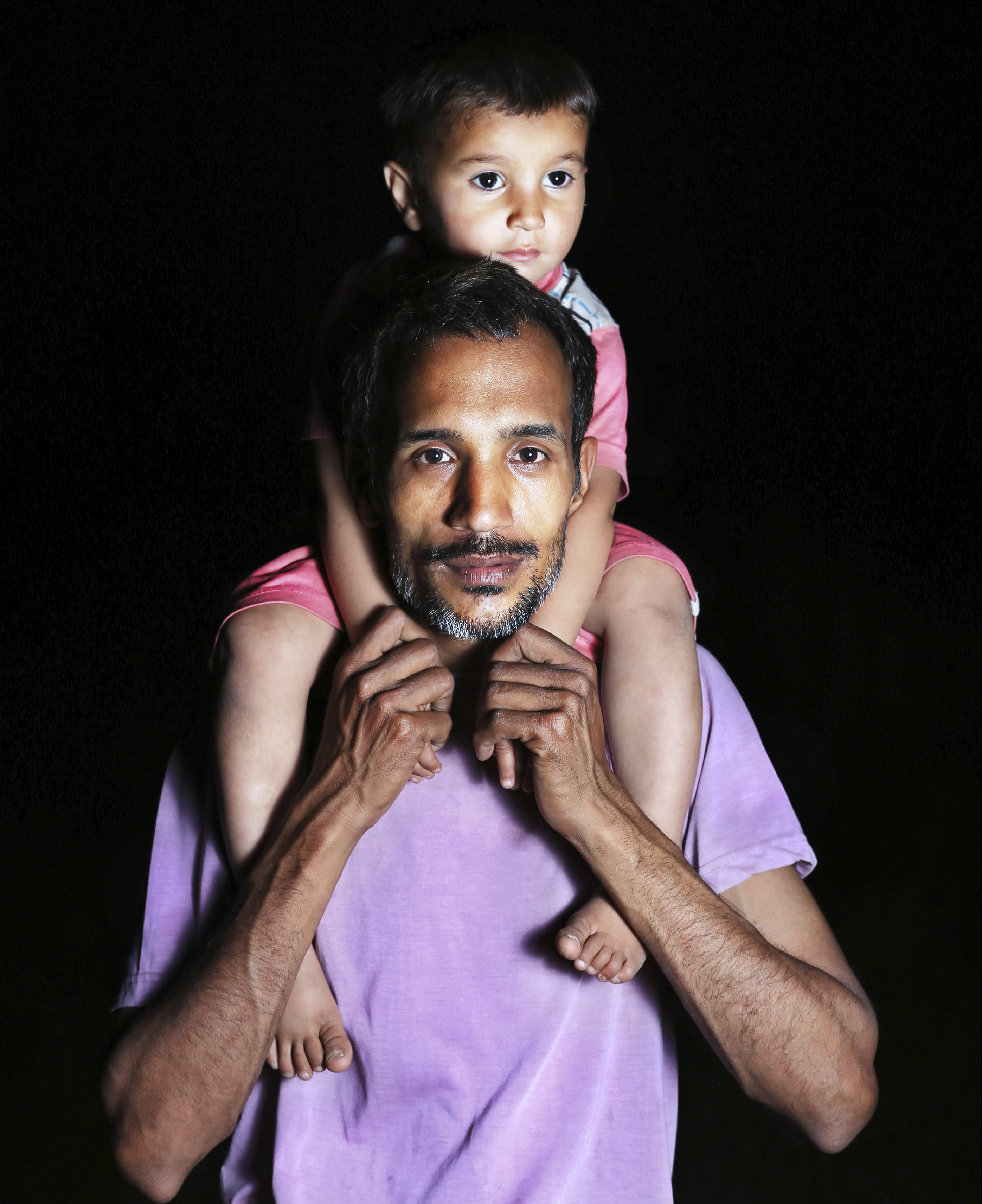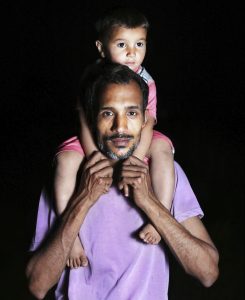Written with collaboration from her team!
 Young children grow and develop at different rates but generally will reach specific developmental milestones (social-emotional, language/communication, cognitive, movement/physical, and self-help) approximately around the same time. When a family or professional has a concern about a child’s development, resources are available to support a child and their family in reaching their full potential. Early OnⓇ is Michigan’s system for helping infants and toddlers, birth to age 3 and their families, who have developmental delays and/or disabilities or are at risk for delays due to certain health conditions, including infant mental health disorders. It is designed to help families find the social, health, and educational services that will promote the development of their infants and toddlers with special needs.
Young children grow and develop at different rates but generally will reach specific developmental milestones (social-emotional, language/communication, cognitive, movement/physical, and self-help) approximately around the same time. When a family or professional has a concern about a child’s development, resources are available to support a child and their family in reaching their full potential. Early OnⓇ is Michigan’s system for helping infants and toddlers, birth to age 3 and their families, who have developmental delays and/or disabilities or are at risk for delays due to certain health conditions, including infant mental health disorders. It is designed to help families find the social, health, and educational services that will promote the development of their infants and toddlers with special needs.
Mandated by federal legislation, this statewide system called Early On is otherwise referred to as Part C of the Individuals with Disabilities Education Act, (IDEA). When talking about IDEA Part C and Early On services, you often hear the term “Early Intervention.” The purpose of early intervention is to enable young children to be active and successful participants during the early childhood years and in the future in a variety of settings — in their homes, with their families, in childcare, in preschool, and in the community. Services are strength-based, family-centered, focused on parent and professional partnerships, provided in a natural environment and based on interagency collaboration. Interagency collaboration between education and public health, for example, creates a sense of community ownership for supporting children and families and addressing their needs and strengths. It also reduces duplication of services and allows for greater efficiency in the use of public resources.
Services are provided in a natural environment, which can be defined as any place a child and family lives, learns and plays. This includes settings and activities that are normal for a child’s same-age peers in his/her community who have no disabilities or developmental delays.
Young children tend to thrive when they are in familiar surroundings with people and objects that are dear to them and when services are provided during everyday routines.
An Early On provider supports this intervention through coaching parents/caregivers and early childcare providers.
In Michigan, Early On services are free to eligible children and their families. There are multiple ways an infant or toddler may become eligible for Early On, including the presence of a developmental delay or an established condition. This also includes infant mental health conditions. Infants birth to 2 months qualify for Early On with any delay in development. Children 2 months to age 36 months are eligible with a delay of 20 percent or greater in one or more of the following areas of development: cognitive; physical, including gross and fine motor; communication; social/emotional; and self-care skills.
Another way to become eligible for Early On is to have an “established condition,” which is a diagnosed physical or mental condition that has a high probability of resulting in developmental delay. Infants and toddlers with a diagnosed condition likely to result in a delay qualify for Early On under the category of Established Condition. View a list of conditions that indicate automatic eligibility for Early On supports and services here.
Established conditions must be diagnosed by a health care or mental health provider and documented in a medical record. Mental health providers can diagnose infant mental health conditions that make a child eligible for early intervention. These mental health conditions consist of the following: adjustment disorders, depression of infancy and early childhood, diagnosed regulatory disorders, disorders of affect, maltreatment/deprivation disorder, mixed disorders of emotional expressiveness, and post-traumatic stress disorder (PTSD).
Some infants and toddlers in Early On with greater developmental delays may also qualify for services through Michigan Mandatory Special Education (MMSE). Eligibility for MMSE services is determined by the Michigan Administrative Rules for Special Education or MARSE.
A referral must be made to begin the eligibility process for children to receive Early On services. Anyone can support a family in making the referral or by offering to make the referral with the family. You do not need a referral from a physician to start the process. Either way, the family should be aware and agree to the referral to ensure continued trust and relationship building.
A referral should be made
- When a child isn’t reaching milestones
- If an established condition exists or
- When a parent expresses concern
Referrals can be made at www.1800earlyon.org or by calling 1-800-EARLYON. You can also contact the Early On coordinator at your county-level intermediate school district, https://eotta.ccresa.org/Contacts.php?id=1. You may want to familiarize yourself with the Early On referral form before talking to families. You can find the form at https://1800earlyon.org/online_referral.php. Families should hear from their local Early On program within 10 calendar days of receipt of referral.
Infant mental health clinicians and providers are in a unique position to notice if a child is not developing through typical stages or milestones. If you have a concern about a child’s development, you have a responsibility to discuss your concerns with the family right away. Getting intervention early can make a tremendous difference in the child’s quality of life and learning.
More than ever, professionals and parents of children with disabilities are being asked to work in partnership.
Professionals working with infants and toddlers must be courageous enough to have these sensitive conversations with families and learn to be effective in creating opportunities for children to thrive.
A key component to providing effective family-centered early intervention services is being culturally responsive and aware. Sometimes, these conversations are difficult to initiate with parents. Janice Fialka, LMSW, ACSW is a nationally recognized lecturer, author, and advocate on issues related to parent-professional partnerships, and has put together a website, Dance of Partnership, to assist professionals and parents of children with disabilities in developing strong partnerships. In addition to the resources found on her website, here are several tips on how to talk to parents about their child’s development with cultural considerations at the forefront of your work:
Prepare yourself before talking to the parents. If they speak another language, make sure to find a way to communicate through the language barriers before your first visit. Here are a few suggestions: 1) Collaborate with a trusted interpreter if needed. 2) Consider hiring bilingual staff from some of the highest represented countries in your community. 3) Work with cultural brokers. 4) Partner with community organizations/ networks to learn about specific cultures. 5) Find ambassadors to help manage messaging and a culturally responsive approach to families (i.e. The Immigrant & Refugee Resource Collaborative of Greater Lansing helps identify needs and optimizes opportunities for families new to the country, as well as those who have been here for generations).
Be mindful to keep the family as decision makers at the head of your conversation while being respectful of the culture, beliefs, customs and values of the family. Recognize there are diverse family structures. Strive to communicate in ways that inclusively support participation of family members.
Choose a time and place where you can talk alone with the parents or caregiver(s). Ask the family about their typical day and week and plan a good time to talk around their activities.
Strive to be culturally responsive and aware of the family’s personal cultures and values and to understand how these might impact intervention. Be careful not to attribute behaviors to disability when they are considered developmentally appropriate within the culture of the family.
Give the “big picture” and focus on the child’s strengths and the milestones that they are meeting, not just on the deficits and developmental delays.
Put yourself in the parents’ shoes. Realize that it is not easy to hear that your child may be falling behind.
Be sure to ask the parents for their perspective on the issue as well and reassure them that it takes time to feel confident and comfortable with the information being discussed. Remind them you are there to assist them, and fully engage families in developing strategies.
Be prepared for a range of feelings from parents, yourself and others as raising children is complicated and feelings can be strong and unexpected, even from you as the professional.
Be open-minded and give them plenty of time to respond to your concerns.
Acknowledge that learning to handle strong emotions in yourself and others is an important skill.
Seek colleagues who will listen and provide the support that you need.
Be aware of your body language and that of the parents. Ask yourself, “Am I communicating openness?” Be mindful when people appear agitated or “louder.” This can be a sign that they do not feel heard or understood. Listen and ask more open-ended questions if this occurs.
Pay attention to the types of verbal and gestural cues that you use. What is considered respectful differs across cultures.
Refrain from using jargon and ensure that the parents understand the terms you are using while consciously working to engage in cultural reciprocity. The goal is that you can provide support that is in harmony with the beliefs and values of each family.
Don’t reassure parents too quickly that “everything is going to be fine,” as this can feel dismissive and shows a lack of understanding. Remember that you do not have the power to fix the situation or take away the pain.
Lastly, pay special attention to and include the parent and family’s wishes for the child and remember to develop solutions and options with the family as a team.
The goal of early intervention and early childhood special education is to help parents and caregivers support their child’s learning and development using strategies that occur naturally during the child and family’s day. Early childhood educators, including Infant Mental Health professionals, play a key role in ensuring that every child and family is aware of and has access to the resources, supports, and services that they need. “Don’t worry. But don’t wait.” You can be a key person in connecting families with a free screening or evaluation to see if a child is eligible for services through Early On. To make a referral in collaboration with the family, complete an online form at 1800EARLYOn.org or call 1-800-EARLY ON (327-5966) today.



